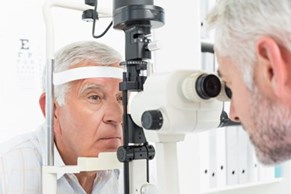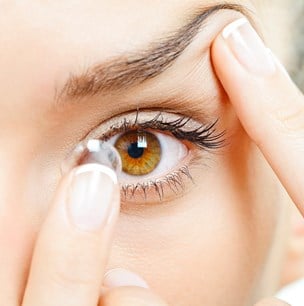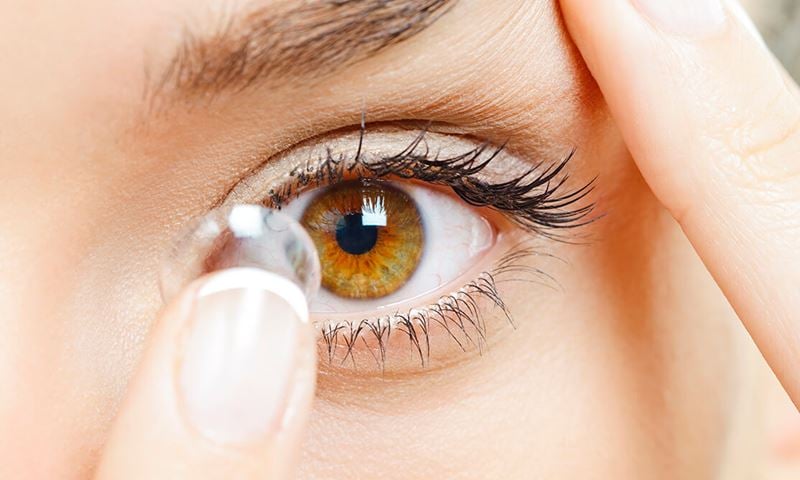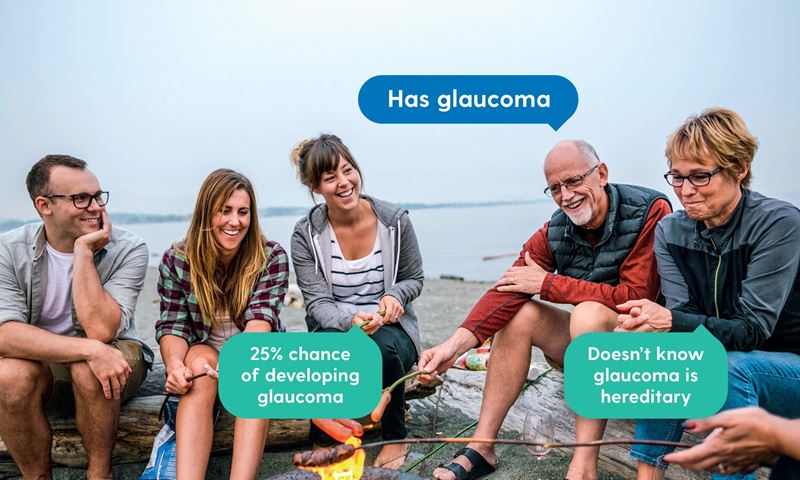 Contact lenses can be used for fashion, sport or convenience. They might be for everyday use or only to use occasionally. People who choose contact lenses will still need glasses as a back-up, regardless of how often they use the contact lenses. If you have an eye infection or are unwell it is often best to give your eyes a rest from contact lenses.
Contact lenses can be used for fashion, sport or convenience. They might be for everyday use or only to use occasionally. People who choose contact lenses will still need glasses as a back-up, regardless of how often they use the contact lenses. If you have an eye infection or are unwell it is often best to give your eyes a rest from contact lenses.
Contact lenses now come in a variety of types. There are soft, conventional, disposable, extended wear, hard or rigid gas permeable (RGP). All common terms to optometrists, but what does it really mean for you?
Disposable lenses:
Disposable lenses can be safer for your eye health as they are replaced more often, with the lenses simply “thrown away” after a period of use. Shorter lifespans mean you’re placing fresh product in your eyes more often and this is the style of lenses we prescribe most often.
A disposable contact lens gives great flexibility in wearing schedules, minimises infections and maximises comfort. Disposable lenses are mass produced in many common prescriptions. They typically come in the form of daily, 2-weekly or monthly replacements. They can be made in prescriptions for multifocals, short sighted, long sighted and for astigmatism, which means that there is likely a disposable contact lens option for you.
Daily disposables:
“Dailies” are the leader of the pack in relation to ease and convenience. These lenses are worn just once and then thrown away; this eliminates the need for cleaning solution to ensure freshness each and every wear. Dailies are an economical option if you don’t intend to wear your contacts every day.
They are great for social wear, sport and activities like swimming or going to the beach The convenience has seen them jump in popularity even when used for everyday wear.
 Fortnightly and monthly replacements:
Fortnightly and monthly replacements:
As the name suggests two-weekly (or fortnightly) contact lenses can be worn up to 14 times.
If you wear the lens every second day, you may be able to use a 2 weekly lens for up to a month. I find it best to jot a note in the diary or calendar when you open a lens, so you can remember when to change it. For this reason I often prefer monthly replacement. It is easy to keep track of changing the lenses, i.e. 1st of each month. Each night the lenses are removed they should be cleaned and disinfected with contact lens solutions.
Extended wear:
Normally contact lenses can only be worn during the day, while you are awake. There are some contact lenses made from special materials that are safe to wear while you sleep. As there are risks involved in sleeping in contact lenses, your optometrist will need to check to ensure your eyes remain healthy and that the lenses are appropriate for you. Some of the silicon hydrogel materials (which are specifically designed for extended wear) have up to six times more oxygen transmission than normal lenses.
Extended wear contact lenses may be worn continuously for up to 30 days and nights. We often recommend at least a night a week without the contact lenses in your eye. This gives time for a good lens clean, disinfection of the lenses and a literal “night off” for your eyes.
Conventional lenses
These are soft contact lenses that are generally replaced after 12-18 months. They are sold individually and usually custom made. They often require more stringent cleaning and care. Tearing or losing a lens that was meant to last 18 months can be costly.
Hard lenses or RGP:
Rigid Gas Permeable (RGP) lenses are often referred to as “hard lenses”. These lenses are often fitted smaller than the cornea. Rigid lenses have the advantage of being more durable giving them a longer life span. They are able to treat more unusual prescriptions and may provide better vision than soft or disposable lenses. Initially RGP’s may be less comfortable than disposable or conventional lenses.
What age is best?
The type of contacts varies from person to person. It can also change with you over time as your demands, hobbies and age alter. Luckily there are contact lens options for almost everyone.
Late primary school to early secondary school is a great time to introduce a child to contact lenses as they tend to learn good cleaning and care habits that stay with them. The youngest wearer I had was a 7 year old, who struggled wearing glasses on the beam for gymnastics. We’ve also seen young children wear them for ballet and basketball. I also have a 75 year old, who initially got the contacts for golf. He found them better than expected and has worn them almost every day for the last 10 years.
Do contact lenses hurt?
While you can definitely feel contact lenses when you initially put them in, you’ll quickly find you don’t notice them. I’ve regularly had patients come in concerned that the lens has fallen out because they can’t feel them anymore. It may initially feel a bit like an eyelash. The easy way to check is to cover an eye at a time and check if you can still see.
The contact lens is a shade bigger than the cornea, so some people will see the edge of the contact lens if you look carefully in the mirror.
I want to try contacts…
If contact lenses interest you, please make sure to discuss it further with your optometrist. A trial can easily be arranged.
There is additional testing which is specific for contact lens wearers, after all a contact lens is a medical device that sits on the eye. You need to ensure you’re purchasing the right size and shape for your needs. The strength of the contact lens may vary to the prescription of your glasses, and we also need to consider other parameters, such as the diameter and curvature of the lens.
For first timers, the hardest bit is often trusting your optometrist to put the lens in.
Trust us, we have put in heaps of lenses, and taken out just as many. There are lots of tips and tricks with contacts that we will happily teach you if you decide to embark on a journey with contact lense.



